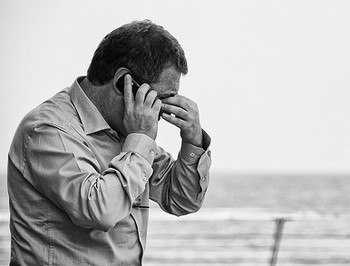Stroke is a disease that attacks suddenly where the brain is injured due to lack of blood supply. It can happen to anyone regardless of age.
Strokes can be very difficult to diagnose, and treat, in patients who already have disabilities.
However, regardless of previous diagnoses, the goal of rehabilitation is the same: to encourage a return to the everyday life that patients enjoyed before their stroke, with as much independence as possible.
Why Strokes Happen
A stroke occurs when the blood supply to an area of the brain is interrupted, causing a lack of oxygen, which in turn causes brain injury. Blood flow to the brain can be interrupted by a clot stuck in a blood vessel (ischemic stroke), or a leaking blood vessel (hemorrhagic).
There is no single definite cause of stroke, but a number of factors can increase a person’s risk:
– High blood pressure
– High cholesterol
– Overweight
– Excessive drinking of alcohol
– Smoking
Have an illness or disease that affects the heart or circulatory system
When a disabled person suffers a stroke, their medical team will investigate whether it was caused by a worsening of an existing medical condition, and if so, what treatment is necessary.
Stroke Symptoms
https://www.youtube.com/watch?v=CpR5_LQCyzk
If the patient has a disability that affects speech, coordination or mobility, stroke may be difficult to identify.
Typical symptoms include:
– Slurred speech, or difficulty speaking or swallowing
– Lack of strength on one side of the body
– Loss of balance or coordination
– Problems with vision, such as loss of peripheral vision
If the patient’s existing disability has caused any of these symptoms, caregivers should watch for any exacerbations of those symptoms.
Stroke Recovery in Persons with Disabilities
Because a stroke can affect any part of the brain, there is no uniform way to affect a patient. After a stroke, each patient will be assessed for their recovery and rehabilitation needs, whether they have a disability or not.
It is important that caregivers, friends or relatives, who know the patient’s abilities and personal needs before the stroke, are ready to consult with the medical team. They can convey information that will help the team determine a patient’s abilities and difficulties, so they can understand which symptoms are due to a stroke, and which are long-term, and develop a realistic recovery plan.
The goal of stroke recovery in disabled patients is the same as for anyone else – to go back and enjoy their daily lives.
Ideally patients will recover to the level of independence they enjoyed prior to their stroke. It may not be entirely possible, but with the help of specialized equipment such as stair lifts, and winches, and small handy gadgets, such as shaped bowls, and easy-grip equipment, patients will be able to accomplish many things on their own. As suggested by Acorn Ladderelderly or disabled patients can benefit from the installation of a Personal Emergency System, where they can request assistance by pressing a button on the pendant.
While patients are following a rehabilitation program designed by their medical team, it is important that their disability is properly managed. Their consultants must assess the impact of stroke on their condition, and may need to adjust the medication, physiotherapy program, and/or mobility equipment provided.
Psychological Recovery from Stroke
It is very normal for stroke patients to suffer from anxiety or depression. If these feelings persist, medication may be needed to help the patient feel better. Returning to activities they previously enjoyed will help speed up patients’ physical and emotional recovery, and is an important step in maintaining their identity and enhancing their self-esteem.
This guest post was written by stair lift suggestionmanufacturing and installation experts, Acorn Stairlifts.








